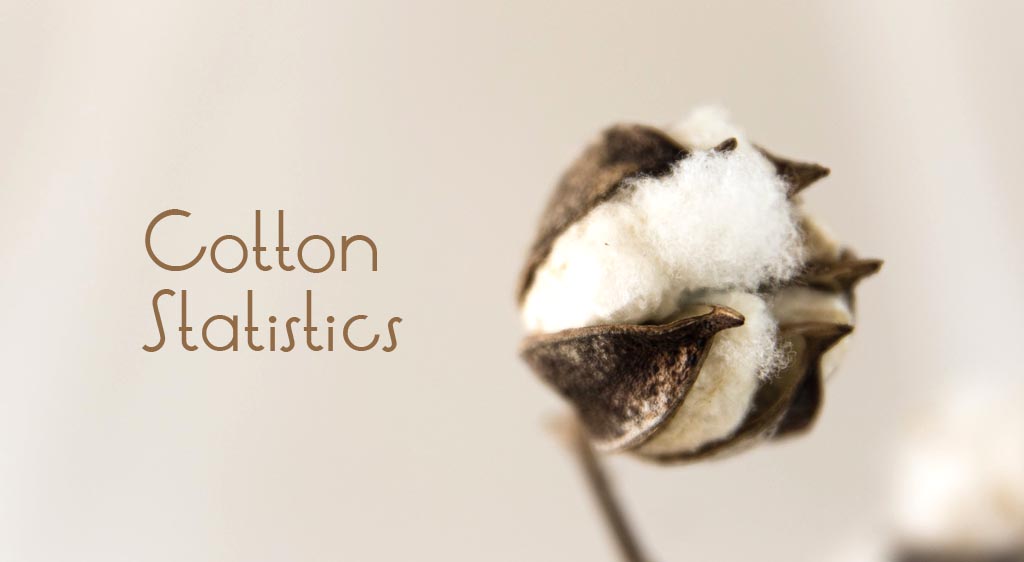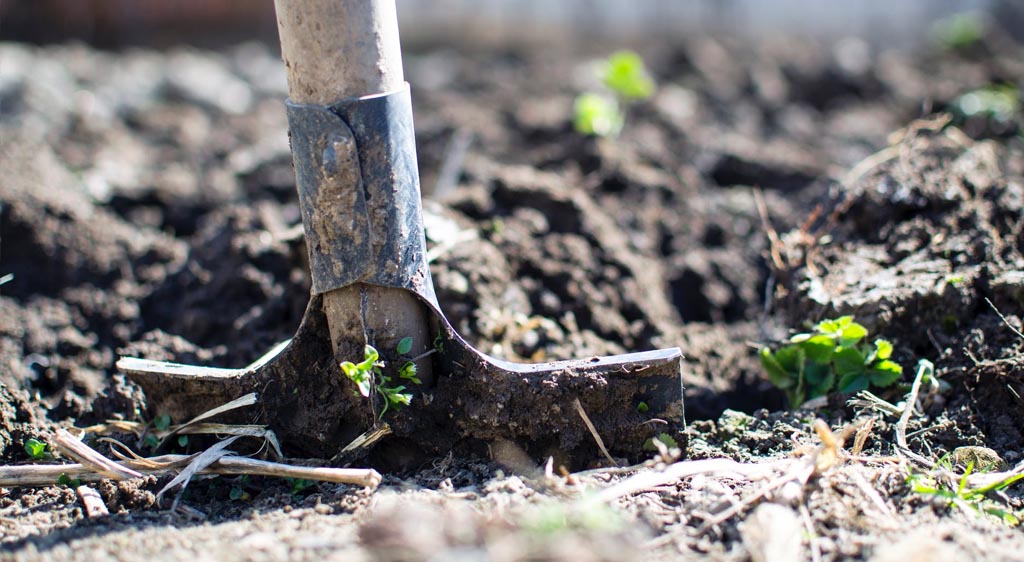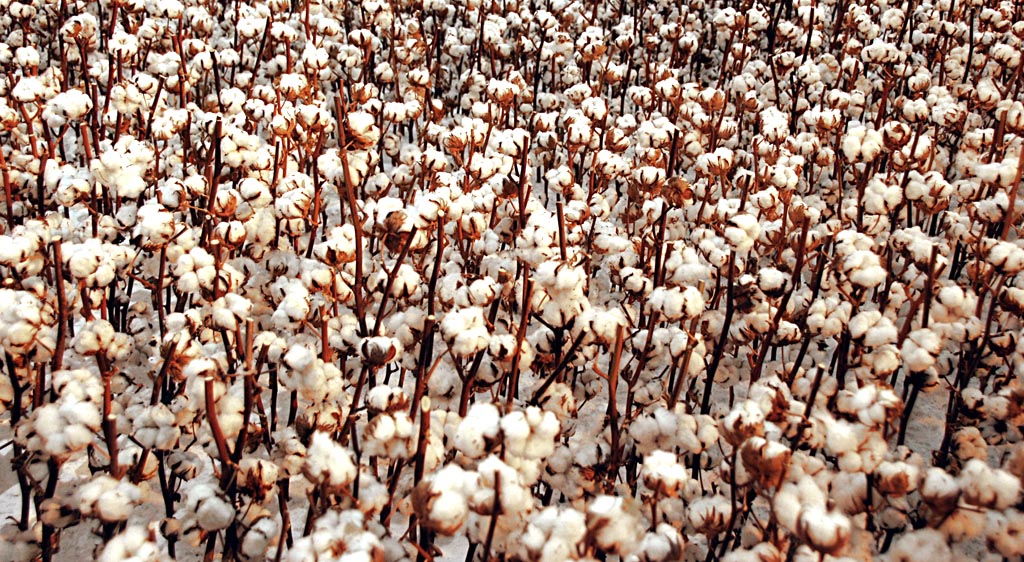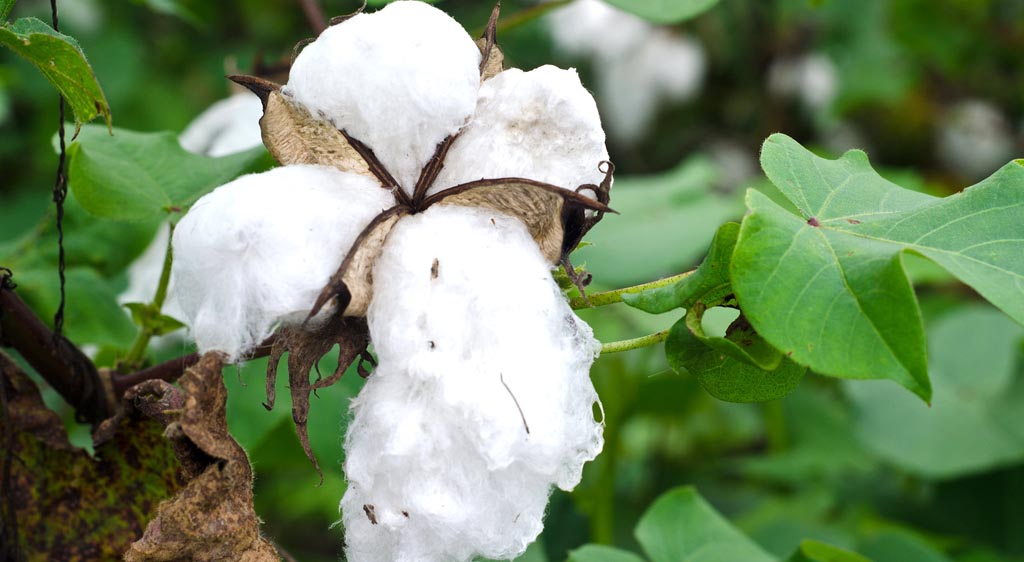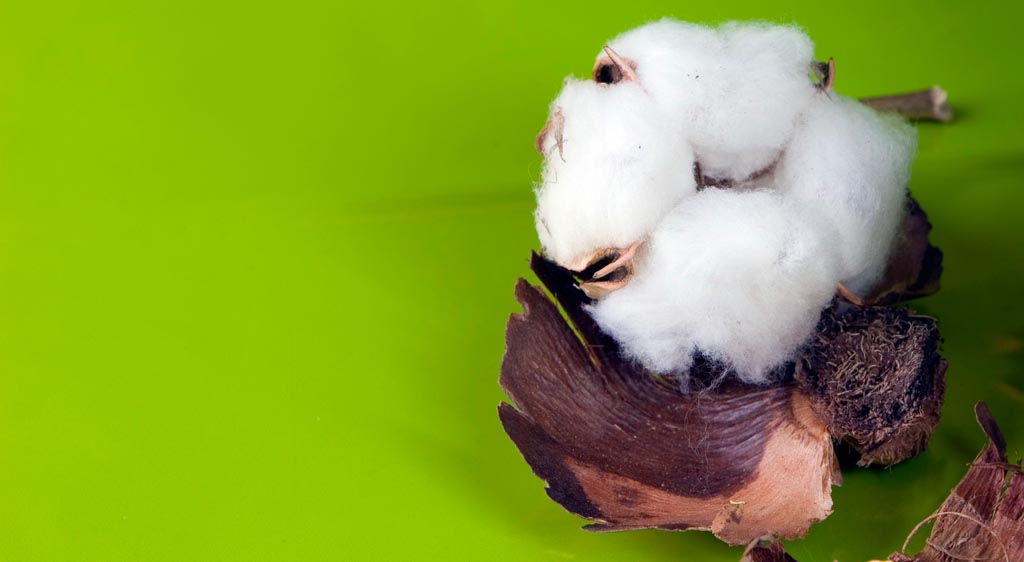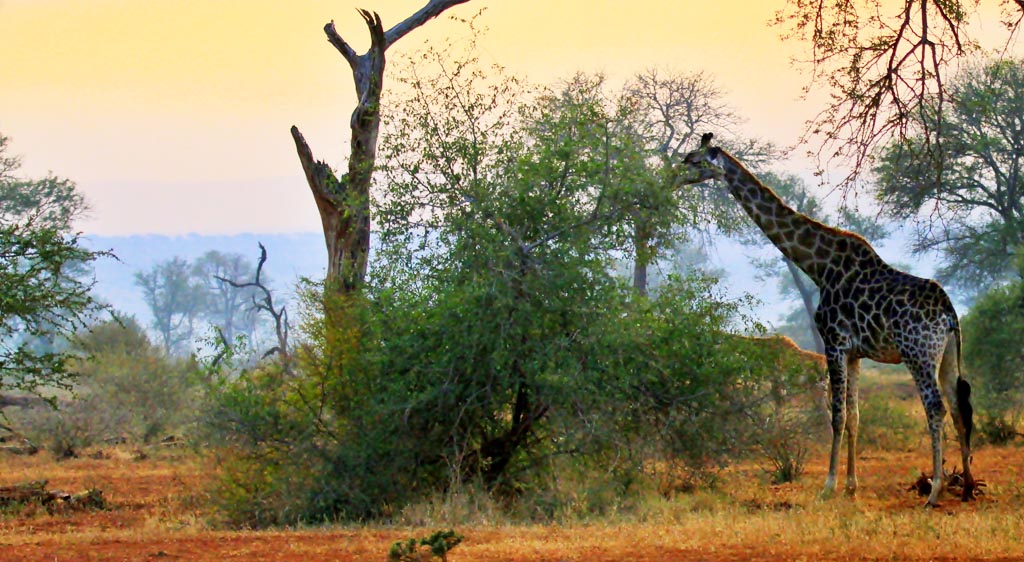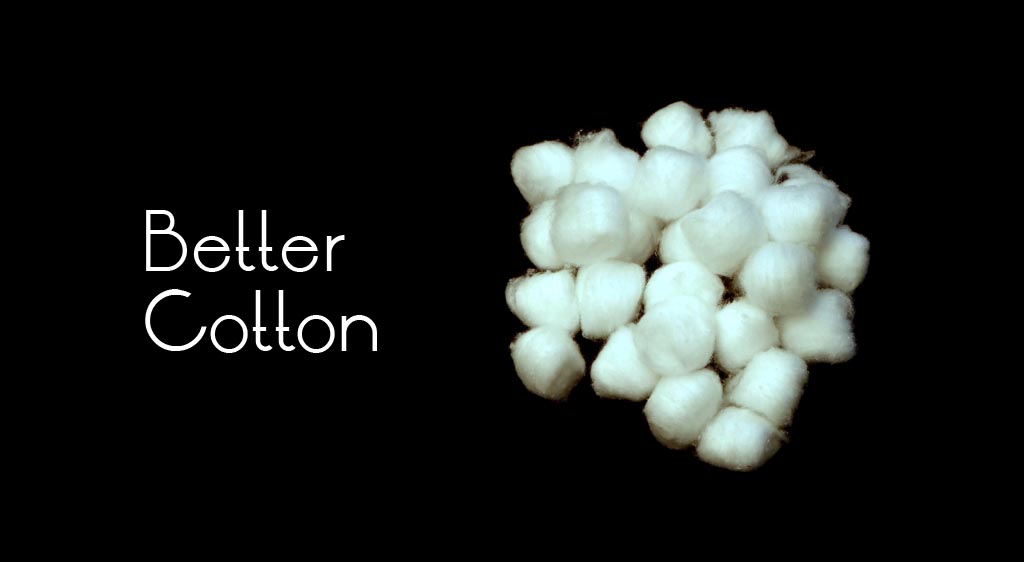Cotton Industry Statistics
Cotton is one of the most economically significant textiles in the world. We use cotton for all kinds of clothing and home decorations because it has properties that make it an ideal material for fabric. Cotton is naturally hypoallergenic, so it is appropriate for wearers with sensitive skin. The hypoallergenicity of cotton is also the reason it is used in many medical products, such as bandages and gauzes, and baby clothing. Cotton is perfect for people who sweat easily. Since cotton is breathable, cotton clothes allow airflow to not only let sweat evaporate, but also keep the wearer cool. However, cotton is also an excellent insulator to keep the wearer warm in cold environments, which is why we have cotton sweaters or organic cotton comforters. These, plus many more qualities, are the reasons we have been using cotton for thousands of years. The valuable use of cotton has put a great demand for it. Unfortunately, the efforts the cotton industry makes to meet this demand are costly and damaging to the environment. Conventional large-scale cotton farming requires much water, pesticides, and herbicides which are not sustainable. The world, however, is realizing these issues and are also making efforts to address them.
The Most Surprising Cotton Statistics and Facts
- The world makes 29 million tons of cotton every year.
- The oldest evidence of cotton use dates back 6,000 BC in India and Pakistan.
- Cotton fibers can hold water 24 to 27 times their own weight.
- The tallest cotton plant stood at 9.75 m tall.
- More than 70 countries cultivate cotton.
- It can take 2,700 L of water to produce enough cotton to make a t-shirt.
- There are around 50 species of cotton under the genus Gossypium.
- However, the world cultivates only 4, namely:
- arboreum
- barbadense
- herbaceum
- hirsutu
General Cotton Industry Statistics and Facts
1. There are at least 4 origins of the word “cotton”.
Middle English: coton
Anglo-French: cotun
Old Italian: cotone
Arabic: quṭun, quṭn
2. By the end of the 16th century, cotton was already cultivated throughout the warmer regions in Asia and America.
Cotton was eventually introduced to Africa in the 18th century and later to India.
3. In 1793, Eli Whitney invented and patented the cotton gin.
The cotton gin is a machine that separated the white fluffy lint from the cottonseed. The cotton gin allowed the growth of cotton use.
4. Cotton is applied in 40% of the world’s clothes.
In modern cotton production, the fluffy cottonseed is harvested by machine. More machines are used to remove debris, like sticks and dirt, and further clean and dry the cottonseed. The circular saws of the cotton gin then pluck the fluffy fibers, called the lint, from the seed. The cotton lint is then packed into bales and are ready to be shipped to textile companies.
5. A bale is 500 lbs of cotton.
A bale is how cotton is packaged. Its dimensions (in inches) are:
Length: 54 to 55
Width: 20 to 21
Thickness: 33 or less
The volume is 17 ft3 (0.48 m3) and the density is 28 lbs/ft3 (472 kg/m3).19
The Requirements of Conventional Cotton Farming
6. Cotton statistics estimate that cotton fields occupy around 3% of the agricultural land in the world.
Cotton can grow in temperate, subtropical, and tropical climates. The ideal temperatures are between 18 and 30°C. The ideal soil pH is between 6.0 and 6.5, but the plants can tolerate pH as low as 5.8 and as high as 8.0.
7. Cotton harvests provide 2 crops: the fluffy white cotton fiber and the cottonseed.
Cotton fields produces around 1.4 lbs of cottonseed for every pound of cotton fiber. The cottonseeds are used to produce cottonseed oil for cooking or as feed for animals.
8. Insect damage can result in as much as 15% of global cotton yield loss.
Insect pests have more impact on cotton yield loss than fungal, viral, and bacterial plant pathogens. Weed management is also critical for maintaining productivity.
9. There are 3 common methods for applying pesticides on a cotton field.
The majority of commercial cottonseeds are treated with insecticides before they are planted.
The 3 common methods are:
- Aerial spraying (13% of total)
- Field spraying by hand (52%)
- Tractor spraying (35%)
10. Cotton farms account for 16% of global insecticide use.
Cotton farms also account for 6.8% of global herbicide use. Cotton farms use this much insecticides and pesticides even though they only occupy less than 3% of global agricultural land.
Sustainable Cotton
11. Between 2017 and 2018, sustainable cotton accounted for 21% of global cotton production.
This number translates to 5.3 million metric tons.
Sustainable cotton is “grown in a way that can maintain levels of production with minimal environmental impact, can support viable producer livelihoods and communities, and can do so in the face of long-term ecological constraints and socioeconomic pressures.” Sustainable cotton includes Organic, Fairtrade, Cotton Made in Africa, Better Cotton, and recycled cotton.
12. Between 2016 and 2018, the volume or sustainable cotton actively sourced by brands and retailers increased to about 25%.
These cotton statistics translate to 1.3 million tons of organic cotton. The remaining 75% are traded as conventional cotton.
13. Members of the Partnership for Sustainable Textiles agreed to use at least 35% of sustainable cotton by 2020.
They also agreed to have at least 10% of the total volume they use be organic cotton. By 2025, their aim is to increase the proportion of sustainable cotton to 70%, with organic cotton comprising 20%.
14. In 2018, 38 companies committed to ensuring 100% of the cotton they use comes from sustainable sources by 2025.
In May 2017, 13 of the most renowned clothing and textile companies in the world and signed up to the 2025 Sustainable Cotton Challenge in the presence of the Prince of Wales. The remaining 24 joined later in October 2017. The 38th company joined in January 2018.
15. Since 2010, sustainable cotton production has gradually grown.
Below are the years and their respective total sustainable cotton production.
| Year | Total Producted (in 1000 tons) | % of Global Cotton Production |
|---|---|---|
|
2008-2009
|
210
|
1 %
|
|
2009-2010
|
242
|
1 %
|
|
2010-2011
|
225
|
1 %
|
|
2011-2012
|
593
|
2 %
|
|
2012-2013
|
793
|
3 %
|
|
2014-2015
|
1678
|
6 %
|
|
2015-2016
|
2127
|
8 %
|
|
2015-2016
|
2127
|
8 %
|
|
2016-2017
|
2623
|
12 %
|
|
2017-2018
|
3500
|
15 %
|
Organic Cotton Statistics
16. Cotton statistics show that organic cotton accounts for about 0.7% of total cotton production.
Organic cotton farming has been the response to address the environmental impact of conventional cotton farming. It is used just like regular cotton, but production has none of the negative environmental impacts. Today, we have organic cotton comforters, shirts, sweaters, sheets, and many more. Organic cotton farming uses organic agricultural standards, which excludes the use of synthetic fertilizers, pesticides, and herbicides that can runoff to nearby water systems.
17. Between 2016 and 2018, organic cotton production grew 56%.
This growth is equivalent to 180,971 tons or 831,193 bales of organic cotton.
18. As of 2018, 19 countries produced organic cotton.
These countries produced a total of 5.3 million tons of cotton. About 98% of the organic cotton are from the top 7 countries which are India (47% China (21%) Kyrgyzstan (12%), Tukey (6 %), Tajikistan (5%), the United States (3%), and Tanzania (3%).
19. As of 2017, 34 companies have committed to creating their products from 100% organic cotton or a mixture of organic and recycled cotton.
Moreover, of the 66 brands and retailers that completed the organic fair trade module in the 2017 Textile Exchange PFM Benchmark Survey, 56% have an organic cotton target while 74% reported organic cotton as a key performance indicator.
20. As of 2019, organic cotton is grown by around 200,000 farmers.
These farmers tend to more than 350,000 hectares of certified organic land. Many of these farmers are smallholders growing organic cotton in rotation with other crops.
21. More than 44,000 hectares of cotton farmland are in transition to become organic.
It takes at least 3 years to convert conventional farmland to organic in order to remove all the synthetic chemicals.
22. In 2019, organic farmers in India increased the proportion of organic-certified land to grow from 45 to 70% so they could grow cotton.
This trend contributed to the 44% growth in organic cotton production in India.
Fairtrade Cotton Farmers
23. There are 100 million households involved in cotton production.
Cotton is made in over 70 countries, and many of these countries, particularly the top producers, still rely on human labor to grow, harvest, and process cotton. Unfortunately, even though cotton is one the most important non-food crop, these farmers get little support.
24. The environmental and social impact of Fairtrade Cotton farming is 5 times lower than conventional method.
Fairtrade farming also involves protecting the environment. In Fairtrade farming, farmers improve soil and water quality and manage pests while simultaneously avoiding harmful chemicals, managing their wastes, reducing greenhouse gas emissions, and protecting biodiversity. For example, Fairtrade farmers often grow other plants along with their crops to not only diversify the plant matter and food sources but also to contribute to reforestation.
25. In 2016, Fairtrade cotton farmers received over €823,000 of Fairtrade Premium.
Fairtrade Premium is extra money that Fairtrade farmers receive aside from their earning from their produce and labor. The amount of Fairtrade Premium farmers receive is a percentage of the volume they produce. Each product and even each region differ in the Fairtrade Premium amount. Every 3 to 4 years, this amount is reviewed to adjust for inflation.
Cotton Made in Africa (CmiA)
26. In 2018, CmiA earned more than EUR 2 million, which is a 7.5% increase from 2017.
Aid by Trade Foundation (AbTF) launched the project initiative Cotton Made in Africa in 2005. The general goal of CmiA is to improve the lives of cotton farmers in Sub-Saharan Africa through sustainable African cotton cultivation and sales.
27. About 87% of the 2018 income of CmiA was from cotton sales, while the remaining 13% was from donations.
Although it receives donations, the goal of the CmiA initiative is to help the cotton farmers through trade. The CmiA initiative includes teaching the farmers efficient and environmentally friendly cultivation methods. AbTF partners and sells the cotton to textile companies. These companies also pay a licensing fee to use the Cotton Made in Africa seal on their products. The income is reinvested into CmiA.
28. There are more than 1 million farmers benefiting from Cotton Made in Africa.
Of these farmers, 16% are female. The farmers are taught modern and sustainable growing methods and basic systems. Thus, the farmers are able to run their family farms more efficiently and avoid the health risks of cotton cultivation. CmiA abides by strict policies, such as no child labor, fair pay on time, and no use of harmful pesticides and artificial irrigation.
29. In 2018, there were more than 1 million textiles labelled by Cotton Made in Africa.
Since 2012, the number of CmiA-labelled textiles steadily grew from 20 million (2012) to 90 million (2017).
CmiA also had:
85 spinning mills and textile producers
36 trading partners
19 textile global production markets
15 cotton traders
30. Cotton Made in Africa harvested and ginned 580,000 tons in 2018.
This number was a 17% growth from 2017. This number also translates to 37% of the total African cotton produced.
Better Cotton Initiative
31. In 2018, the Better Cotton Initiative had 2 million licensed farmers.
The Better Cotton Initiative (BCI) is a not-for-profit organization the World Wide Fund for Nature started in 2005, along with other projects. The goal was finding more sustainable solutions for farmers, for the environment, and for the future of each sector. Some of the initial supporters of the BCI were Adidas, Gap Inc., H&M, ICCO, IFAP, IFC, IKEA, Organic Exchange, Oxfam, PAN UK and WWF. As of 2018, 21 countries are licensed by the BCI. Currently, the BCI is the largest cotton sustainability program in the world.
32. In 2018, the Better Cotton Initiative produced a global total of 5.1 million tons of cotton.
This amount accounted for 19% of the global cotton produced. Production increased in nearly all BCI countries. The BCI global production also increased by 50% compared to that in 2017, which already rose by more than 75%.
33. Today, 99% of licensed BCI Farmers are smallholders.
These farmers work on less than 20 hectares of land. Similar to Cotton Made in Africa, the BCI trains its farmers on sustainable farming methods. The BCI has partners in the private and public sector to help the farmers by following the Better Cotton Principles and Criteria, which include crop protection, water stewardship, enhancing biodiversity, responsible land use, and more.
34. By 2020, the Better Cotton Initiative and its equivalents aim to contribute 30% of total global cotton production.
The BCI recognizes other organizations as equivalents based on their rigorous sustainable cotton standards. Farmers growing cotton in line with these standards can sell their cotton as Better Cotton. These organizations include:
- myBMP (Australia)
- ABR (Brazil)
- Cotton Made in Africa and Smallholder Cotton Standard
35. By 2020, the Better Cotton Initiative aims to support 5 million cotton farmers.
The BCI tries to achieve this by focusing on the diverse social, environmental and economic challenges faced by cotton farmers around the world, such as drought in Australia, flooding in China, or gender equality in Pakistan. In doing so, the BCI hopes to help cotton farmers to raise their yields, reduce their impacts on the environment, and improve the working conditions.
Conclusion
As a major global crop, cotton production impacts the lives of hundreds of millions in the world. The next time you put on a shirt, think about the farmers that grew, harvested, and processed the cotton.
References
LiveStrong:
https://www.livestrong.com/article/458401-what-is-sodium-polyacrylate-how-is-it-used/
The World Counts:
https://www.theworldcounts.com/challenges/consumption/clothing/world-cotton-production-statistics
Organic Cotton:
https://www.organiccotton.org/oc/Cotton-general/World-market/History-of-cotton.php
Guinnes World Records:
https://www.guinnessworldrecords.com/world-records/tallest-cotton-plant/
Cotton Australia:
https://cottonaustralia.com.au/where-is-cotton-grown
World Wide Fund for Nature:
https://www.worldwildlife.org/stories/the-impact-of-a-cotton-t-shirt
Organisation for Economic Co-operation and Development:
Merriam-Webster:
https://www.merriam-webster.com/dictionary/cotton#h1
Sciencing:
https://sciencing.com/how-much-cotton-does-it-take-to-make-a-shirt-9749733.html
Science Channel:
https://www.youtube.com/watch?v=QHgNoSYlhYs
Cotton Today:
https://cottontoday.cottoninc.com/wp-content/uploads/2016/08/Land-Fact-Sheet1.pdf
University of Missouri:
http://extension.missouri.edu/scott/documents/Ag/CCA-2017%20Presentations/2017%20CCA%20CM%20Cotton%20Production-Mueller.pdf
Cotton Organic:
https://www.organiccotton.org/oc/Cotton-general/Plant-and-fibres/Plant-requirements.php
Food and Agriculture Organization:
http://www.fao.org/3/a-i4170e.pdf
Cotton Organic:
https://organiccotton.org/oc/Cotton-general/Impact-of-cotton/Risk-of-cotton-farming.php
Textile Exchange:
https://textileexchange.org/wp-content/uploads/2019/11/Textile-Exchange-Organic-Cotton-Market-Report-2019.pdf
Organic Trade Association:
https://ota.com/sites/default/files/indexed_files/Organic-Cotton-Facts.pdf
Organic Trade Association:
https://ota.com/advocacy/fiber-and-textiles/get-facts-about-organic-cotton
Sustainable Cotton Ranking:
https://www.sustainablecottonranking.org/market-update
About Organic Cotton:
http://aboutorganiccotton.org/stats/
Cotton Up:
http://cottonupguide.org/why-source-sustainable-cotton/what-is-sustainable-cotton/
Textile Exchange:
https://textileexchange.org/wp-content/uploads/2018/11/2018-Organic-Cotton-Market-Report.pdf
Song, G. (2011). Improving comfort in clothing. Cambridge, UK: Woodhead Publishing.
Aksoy, M. A. & Beghin, J. C. (2005). Global agricultural trade and developing countries. Washington, DC, USA: The World Bank.
